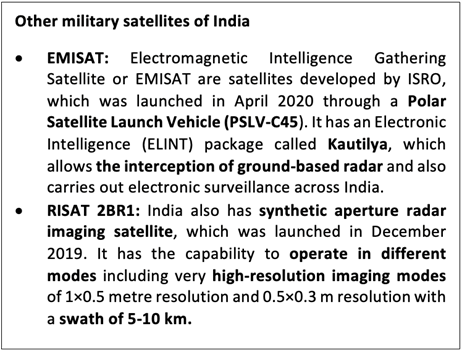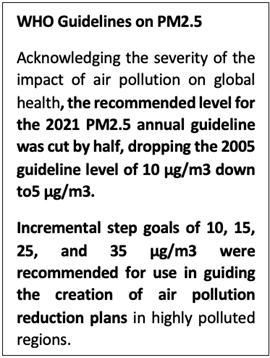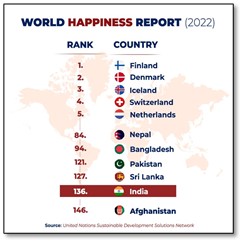Monday, 28th March 2022
Minority Status in India
In News
Ministry of Minority Affairs has recently filed an affidavit in the Supreme court declaring that state governments can also declare a religious or linguistic community as a ‘minority community’ within the state”.
About the News
- Previously in Bal Patil case, the SC had established that Linguistic and religious minorities are covered by the expression "minority" under Article 30 of the Constitution.
- At present, Under Section 2(C) of the NCM Act, only the Centre can declare a community as a ‘minority’.
What is the status of minority in India?
- Constitution: The constitution mentions the term ‘minority’ only on two occasions in Article 29 and in Article 30 but nowhere defines the term and no effort was made to define it.
- Article 29: Any section of the citizen residing in the territory of India or any part thereof having a distinct language, script or culture of its own shall have right to conserve the same.
- Article 30: All minorities, whether based on religious or linguistic, shall have the right to establish and administer educational institutions of their choice.
- National Commission for Minorities Act, 1992: Under Section 2(c) of the act, the Centre had in 1993 notified five communities — Muslims, Sikhs, Buddhists, Parsis and Christians -- as minorities. Later, Jains were also added to the list of minorities in 2014.
- Census: As per the Census 2011, the percentage of minorities in the country is about 3% of the total population of the country. The population of Muslims are 14.2%; Christians 2.3%; Sikhs 1.7%, Buddhists 0.7%, Jain 0.4% and Parsis 0.006%.
- Notified regions: As per Ministry of Ministry affairs, there are 90 minority Concentration Districts, 710 Minority Concentration Blocks and 66 Minority Concentration Towns have been identified on the basis of both population data and backwardness parameters of Census 2001.
- Supreme Court: In the TMA Pai case, the court has established that for the purposes of Article 30 that deals with the rights of minorities to establish and administer educational institutions, religious and linguistic minorities have to be considered state-wise.

What are the major issues?
- Need for appropriate guidelines: There is need for appropriate guidelines for the identification of minorities. As per the 2011 Census, Hindus were a minority in Lakshadweep, Mizoram, Nagaland, Meghalaya, J&K, Arunachal Pradesh, Manipur, and
- Need for inclusion of other religions: Followers of Judaism, Bahaism, and Hinduism, who are minorities in some states and UTs cannot establish and administer educational institutions of their choice at present.
- Reorganisation of state: Since reorganization of the States in India has been on linguistic lines, therefore, for the purpose of determining the minority, the unit should be the State and not the whole of India. Thus, religious and linguistic minorities, who have been put on a par in Article 30, needs to be considered state-wise.
- Political sensitive issue: Identification of minorities at the state-level would have political repercussions especially in states where the Centre will have to take a decision on according Hindus and smaller groups with minority status in places such as Kashmir, Punjab and many sensitive North-eastern states, where the respective majority communities currently hold minority rights.
- Legal status: Under the Constitution, both Parliament and state legislatures have concurrent powers to enact law to provide for the protection of minorities and their interests.
Sources:
GIFT City Securitized AIF for FPIs
In News
Several reforms for category III AIFs in GIFT City may help enhance participation by foreign portfolio investors (FPIs) in securitization transactions.
What is Asset Securitization?
- Asset securitization is a process where assets like home loans (mortgage-backed securities, or MBS), auto/microfinance loans and credit card debt (asset-backed securities, or ABS), etc., are pooled and repackaged as interest-bearing securities.
- Securities are fungible and tradable financial instruments used to raise capital in public and private markets, that holds some type of monetary value.
- They may be equities, debt, or hybrid securities.
- The pooled assets are sold to investors either in the form of pass-through certificates (PTCs), which are like bonds, for standard assets, or security receipts (SRs) for stressed assets.
- In India, asset securitization is comparatively new.
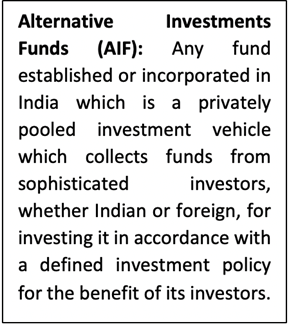
Reasons for Low FPI in securitization transactions
- The complexities involved in obtaining and submitting documents like PAN card due to data privacy and other concerns, including filing of income tax returns.
- Prevailing higher levels of taxation (up to 20%) on income arising from such investments.
- Absence of any fund focusing on securitization pools that could benefit from the inherent diversification of investing in multiple pools, and address the difficulty in hedging forex risk due to unpredictable cashflows of MBS/ABS by pooling cash flows and stabilizing investor pay-outs.
- Indian asset managers’ reluctance to design products for offshore investors due to higher set-up costs in running pooling vehicles in offshore jurisdictions like Mauritius, tax litigations and poor access to regulators.
How will GIFT City help?
- Late last year (2021), SEBI allowed resident Indians, other than individuals, to become constituents of FPIs that are registered as alternative investment funds (AIFs) in IFSCs, in a bid to facilitate investment in Indian securities markets through the FPI route.
- Recent government regulatory and tax reforms for Category III Alternative Investments Funds (AIFs) in GIFT City, will help AIFs based on securitization pools for both the offshore investors and asset managers.
- Category III AIFs employ diverse or complex trading strategies and may employ leverage including through investment in listed or unlisted derivatives. Various types of funds such as hedge funds, PIPE Funds, etc. are registered as Category III AIFs.
- Some of the important reforms are as follows:
- PAN card is not required under the Income Tax Act for non-resident investors when investing in securitization products based in GIFT City.
- There is exemption from tax on any income received from the Category III AIF since the returns are taxed at the fund level (at lower rates).
- Category III AIFs could lower credit risk through better diversification, and remove difficulties in hedging forex risk.
- Asset managers will have benefits such as 100% corporate tax exemption for 10 consecutive years out of a block of 15 years.
Sources:
The Delhi Municipal Corporation (Amendment) Bill, 2022
In News
The Union Minister of State for Home Affairs has introduced the Delhi Municipal Corporation (Amendment) Bill, 2022 in Lok Sabha recently.
About the News
- The Bill has been introduced to merge the three municipal corporations of Delhi into a single entity.
- It seeks to amend The Delhi Municipal Corporation Act, 1957, to effectively undo the earlier 2011 amendment to the Act by which the erstwhile Municipal Corporation of Delhi (MCD) was trifurcated into separate North, South, and East Delhi Municipal Corporations.

Components of the Bill
The Bill, when passed, will not return the MCD exactly to its pre-2011 situation. It has sections that will make the new MCD very different from the older one
Different in what way?
- Number of seats: The number of seats in the MCD house is proposed to be capped at 250, and the final number will be decided by the central government at the time of establishment of the corporation.
- At present, there are 272 elected councillors in the three corporations together. This was the number even before the trifurcation.
- Appointment of Special Officer: The Bill allows the Centre to appoint a Special Officer until the first meeting of the unified MCD takes place. This means that until the elections are concluded, the Centre will likely appoint an officer to run the corporation.
- “Government replaced by “Central Government”: Other significant change is the replacement of the word “government” with “Central government” in all places. This would take the Delhi government out of the picture completely with respect to decision-making in the unified corporation.
- The 2011 amendment marked out areas where the Delhi government would have the power to make decisions. These included:
- the number of seats reserved for Scheduled Castes in the corporation,
- the division of the area of corporations into zones and wards,
- the delimitation of wards, salary and allowances, and
- leave of absence of the Commissioner
- The Bill however empowers the central government to decide all these matters.
- Director of Local Bodies done away with: The Bill also does away with the provision of appointing a Director of Local Bodies (whose role has been to monitor cooperation among the corporations and to track the collection and sharing of toll tax) by the Delhi government.
- Silent on fund allocation: The Bill is silent on the fund allocation to the singular municipal corporation.
- Under the current system, a part of the corporations’ finance comes from the Delhi government as per the recommendations of the State Finance commissions.
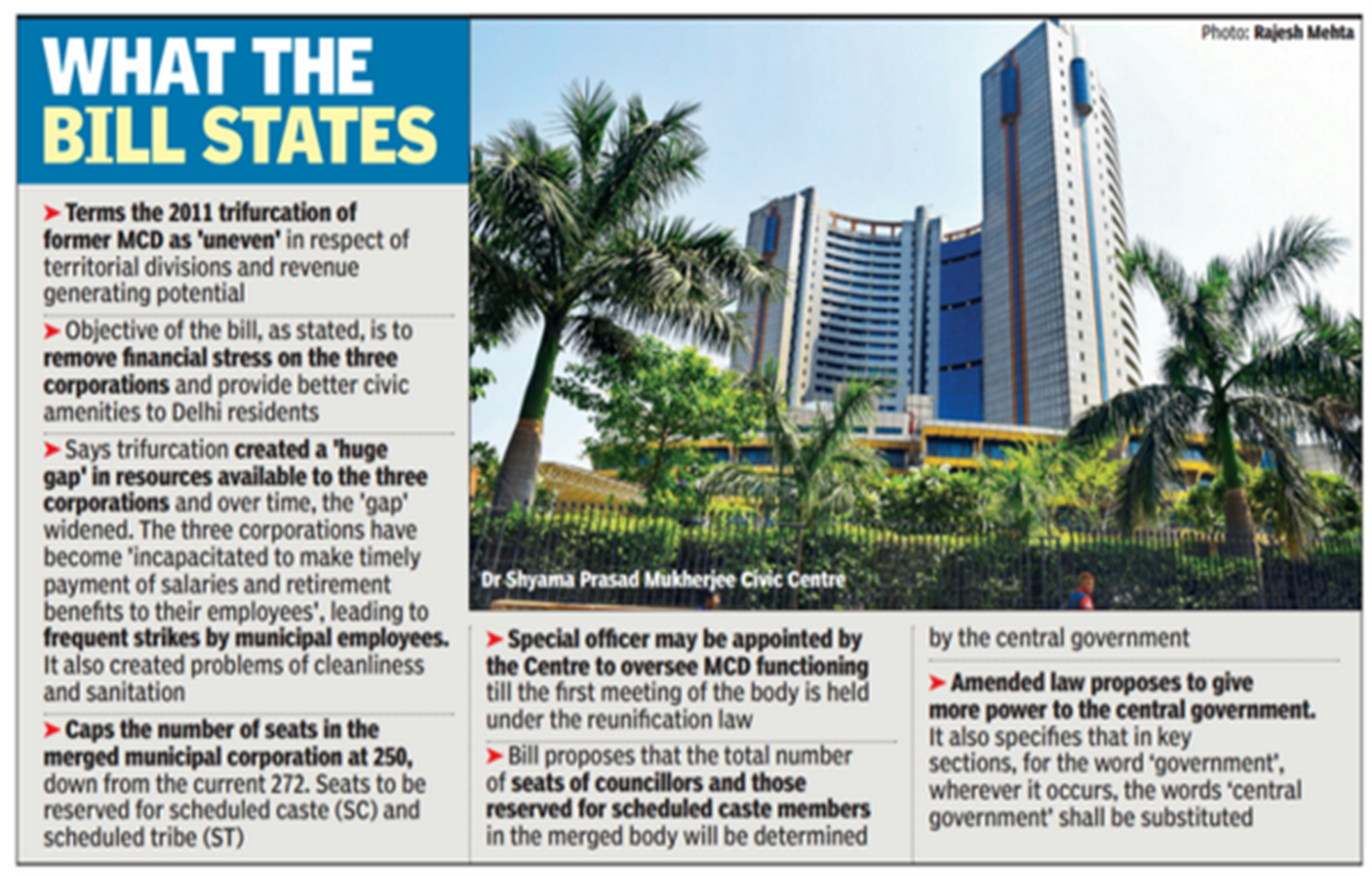
Source:
- MCD Bill introduced in Lok Sabha; Opp slams ‘breach of Constitution’
- Explained: What Centre wants to change in Delhi civic body
- 3 in 1: New bill silent on New Delhi funding
Image source:
Constantinople renamed Istanbul
On March 28, 1930, Constantinople was renamed as Istanbul. Built as Byzantium about 657 bce, then renamed Constantinople in the 4th century ce after Constantine the Great made the city his capital, the Turkish city of Istanbul officially received its present name on this day in 1930. Istanbul is the largest city and principal seaport of Turkey. It was the capital of both the Byzantine Empire and the Ottoman Empire. The old walled city of Istanbul stands on a triangular peninsula between Europe and Asia. Sometimes as a bridge, sometimes as a barrier, Istanbul for more than 2,500 years has stood between conflicting surges of religion, culture, and imperial power. For most of those years it was one of the most coveted cities in the world.

Sources:
Women in the Judiciary: Working towards a legal system reflective of the society
In News
- The Supreme Court of India on March 10 celebrated the first-ever International Day of Women Judges, to promote full and equal participation of women at all levels of the judiciary.
- The United Nations General Assembly had on April 28 last year, resolved to mark March 10 of every year as International Day of Women Judges. India was among the nations that sponsored the resolution, which was moved by Qatar.
Setting up the Context
- The current Chief Justice of India (CJI) have been vocal in his support towards a more gender diverse judiciary. On many occasions he put forward the challenges and issues being faced by women in judiciary.
- He also remarked last year that, 50% representation for women in judiciary is their right. It is not a matter of charity.
- The Chief Justice has also been highlighting the need to increase gender diversity in legal education and advocates reservation of a significant percentage of seats in law schools and universities for women.
- The Supreme Court has the highest ever number of women judges serving now. In this context it becomes imperative to have a closer analysis of women representation in judiciary.
State of Women in Judiciary
- In Supreme Court: The Supreme Court currently has four women judges out of a total of 34 judges and this is the highest ever representation of women in the Supreme Court’s history.
- In High Courts (HCs): As on 1 October 2021, out of 627 judges in all HCs, only 66 are women — just about 10% of the total working strength.
- In Lower Courts: There are nearly 30% women judges in the lower courts. A report by Vidhi Centre for Legal Policy states that in 17 states, between 2007 and 2017, 36.45% of judges and magistrates were women. As of 2018, out of the total 15,806 lower court judges, 4049 were women.
- This significant difference in the composition of higher and lower courts is attributed to the different recruitment processes and the existing reservation system in subordinate courts. For instance, Bihar provides 50% reservation in the state’s judicial services.
- Between 2006 and 2021, 150 women judges have been appointed to HCs, but 84 of them have already retired, and only 66 are still serving.
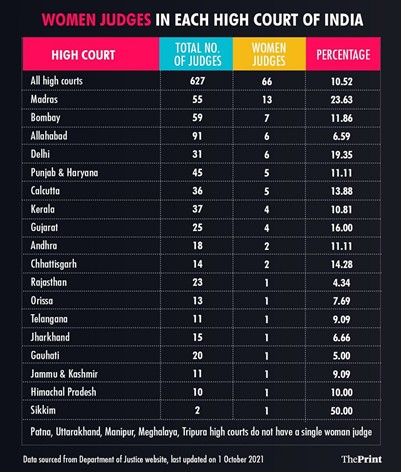
Reasons for Low Representation of Women in Judiciary
- Rules for Appointment: While Article 233 of the Constitution provides that appointment as a district judge requires not less than seven years as an advocate, the Supreme Court has interpreted it as continuous practice.
- Inherent prejudice is evident as women face many societal and familial pressures because of the intervening social responsibilities of marriage and motherhood which doesn’t allow them to have 7 years of continuous practice.
- Not many women lawyers directly elevated: There are two types of appointments that take place in HCs — direct elevation from the Bar to the Bench, and promotion of trial court judges.
- Of the 150 women picked to be part of the 25 HCs since 2006, only 61 were cases of direct elevation, while the rest were trial court judges who got promoted.
- Opaque higher judicial appointments: Compared to subordinate judiciary, the higher judicial appointments process is opaque and rely on subjective factors such as professional viability, favourable evaluations and professional achievement and networks.
- Small Talent Pool: Women amounting to only 15% of practising advocates reduces the pool significantly for direct promotion at higher levels of the judiciary.
- Patriarchal mindset: The hostile and sexist environment at the apex courts makes it extremely difficult for female litigators to grow as professionals. As per a paper titled ‘Structural and Discretionary Bias: Appointment of Women Judges in India’, 13 judges out of 19 acknowledged the gender bias that exists in the appointment procedure of higher judiciary.
- The lack of infrastructure, gender stereotypes and social attitudes have plagued the entry and progress of women in the legal profession.
- Clients’ preference for male advocates, uncomfortable environment within courtrooms, lack of infrastructure, crowded courtrooms, lack of washrooms for women etc. — all these deter women from entering the profession.
- Hesitation in pursuing this field of law: In the Common Law Admission Test for National Law Universities 2019, women comprised 44% of the qualified candidates. Yet there is an apparent lack of women in litigation, which points to an amount of hesitation in pursuing this field of law.
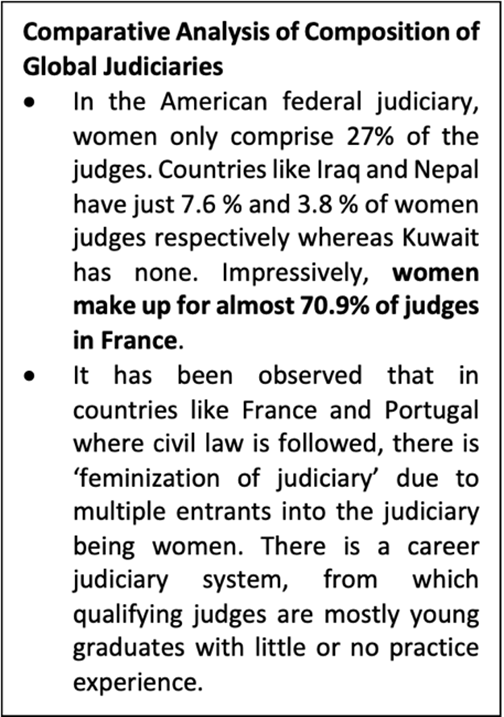
Why should there be higher representations of women in judiciary?
- For legitimacy of judiciary: The judiciary will not be trusted if it is viewed as a bastion of entrenched elitism, exclusivity, and privilege, oblivious to changes in society and to the needs of the most vulnerable. That is why the presence of women is essential to the legitimacy of the judiciary.
- More transparent, inclusive, and representative judiciary: The entry of women judges into spaces from which they had historically been excluded has been a positive step in the direction of judiciaries being perceived as being more transparent, inclusive, and representative of the people whose lives they affect.
- Quality of justice: These lived experiences of women judges (e.g., social, and cultural impacts women face) are reflected in their judicial actions, experiences that tend toward a more comprehensive and empathetic perspective- one that encompasses not only the legal basis for judicial action, but also awareness of consequences on the people affected.
- Enlarged scope of discussion and adjudication: By elucidating how laws and rulings can be based on gender stereotypes, or how they might have a different impact on women and men, a gender perspective enhances the fairness of adjudication, which ultimately benefits both men and women.
A discussion on the Need of a gender diverse judiciary
- The judgements are greatly influenced by the judges’ personalities and the misogynistic and prejudiced attitudes of Indian judges may affect their judgements.
- The intrinsic misogyny within the courtrooms is amplified when judgements are based on the previous sexual history of a woman, lack of physical evidence of resistance or injuries, different personal standards of consent and level of contact between the victim and perpetrator before the incident. Rather than focusing on providing socio-legal solutions or justice to the complainants, the courts act as custodians of the current patriarchal order.
- While gender stereotypes exist in the social institutions throughout the country, a major part of it is observed in the rural part. The female population of rural India is oppressed to the extent that they choose to not take any legal action against crimes like domestic abuse, sexual assaults, etc.
- This may be due to reasons such as the lack of legal awareness, fear of repercussions from society, or lack of trust in the judiciary. This lack of trust stems from the assumed behaviour of some male judges especially in cases concerning women.
Conclusion & Way forward
As suggested by the CJI, to enrich the pool of talent, reservation for girls in legal education should be effected. The data proves such a provision has yielded encouraging results in appointing women judicial officers at the district level. Further a transparent and women friendly selection procedure and gender sensitisation of court premises in higher judiciary will ensure gender diverse benches.
Moreover, the collegium system can be made inclusive by mandatory inclusion of a women legal expert/ judge as laid down under the National Judicial Appointments Commission (NJAC) which was struck down by the Supreme Court.
Question: “The judiciary will not be trusted if it is viewed as a bastion of entrenched elitism, exclusivity, and privilege, oblivious to changes in society and to the needs of the most vulnerable. That is why the presence of women is essential to the legitimacy of the judiciary.” Justify this to make a case for higher women representation in Indian judiciary.
References
- CJI Ramana Rues 'Quite Low' Representation of Women in Judiciary
- CJI for greater women share in judiciary
- CJI voices support for 50% representation for women in judiciary
- Ramifications of the Dearth of Female Representation in Indian Judiciary: An Appraisal
- The Higher Judiciary’s Gender Representation Problem
- Judiciary needs more women but reservations are not the right way to get there
- Alarming gender disparity in judiciary: 4 women judges out of 33 in SC, 66 out of 627 in HCs
- Improve representation of women in judiciary, sensitise judges: AG to SC
- Gender discrimination in Indian Judicial System: Causes and Implications
- Women in the Judiciary: working towards a legal system reflective of society
- The Role of Women Judges and a Gender Perspective in Ensuring Judicial Independence and Integrity
- Justice with a gender perspective:
- Gender related Judicial Integrity Process:
- International Day of Women Judges:
- Feminising the Indian Judiciary:
- Tilting the Scale:
- Discussion Around Women’s Representation in the Judiciary Again: Genuine Talk or Empty Noise?:
- Karnataka is most diverse while UP has India’s least diverse justice system:
- Why Are We Still Asking For Female Representation In India’s Higher Judiciary?:
- OPINION: India needs more women’s voices in legislatures, judiciary:
- On Int’l Day of Women Judges, CJI calls for better women representation in judiciary:
Nizam-era stepwell in Bansilalpet
This is image of Bansilalpet stepwell in Secunderabad. Recently, the PM of India praised the Nizam-era stepwell at Bansilalpet during his Mann Ki Baat programme. The contribution of civil society has helped restore the past glory of the well, which was a source of drinking water for nearby areas for several years. The well was located between Nalla Pochamma and Yerra Pochamma temples and water from this well was used for the ablution of the goddesses. It was abandoned in the early 80s after some people died by suicide there. The efforts at restoring it started when an idea to turn it into a parking lot emerged. Hundreds of tonnes of debris was removed from the 60 feet deep well during the clean-up.

Source:
Dehing Patkai National Park - Edukemy Current Affairs
- Context: Coal mining operations have resumed in a part of eastern Assam’s Dehing Patkai Elephant Reserve almost two years after they were suspended.
- Dehing Patkai National Park is a part of the 937 sq. km Dehing Patkai Elephant Reserve that includes the British-era coal mines and oil refinery town Digboi.
- It is located in the districts of Dibrugarh and Tinsukia.
- Also known as the Jeypore Rainforest, it is a deciduous rainforest interspersed with semi-evergreen and lush green flora, the only patch of virgin rainforest in Assam.
- Dehing is the name of the river that flows through this forest and Patkai is the hill at the foot of which the sanctuary lies.
- The National Park is endowed with rich bio-diversity with unique vegetation and diversified fauna such as Chinese Pangolin, flying fox, wild pig, sambar, barking deer, gaur, serow and Malayan giant squirrels.

Source:
Image source:
Daylight-Saving Time
- Context: A recent study has indicated that permanently moving to daylight-saving time is likely to cause more harm than good to our health.
- Daylight Saving Time (DST) is the practice of setting the clocks forward one hour from standard time during the summer months, and back again in the fall, in order to make better use of natural daylight.
- In countries in the Northern Hemisphere, clocks are usually set ahead one hour in late March and are set back one hour in late
- In the Southern Hemisphere the countries usually start the DST period in September-November and end DST in March-April.
- Several countries, including Australia, Great Britain, Germany, and the United States, adopted summer Daylight Saving Time during World War 1 to conserve fuel by reducing the need for artificial light.
- Currently, DST is followed in over 70 countries on various dates.
- India does not follow DST as countries near the Equator do not experience high variations in daytime hours between seasons.

Source:
- Why Permanent Daylight-Saving Time Is Bad for Your Health, Sleep Scientists Say
- Daylight-Saving Time
Image source:
Digital Markets Act
- Context: The European Union (EU) had recently finalised the details of its Digital Markets Act (DMA) to make the digital sector fairer and more competitive.
- Digital Markets Act is EU’s new legislation that intends to ensure a higher degree of competition in the European Digital Markets, by preventing large companies from abusing their market power and by allowing new players to enter the market.
- Thus, it would dramatically change the way big tech firms such as Apple, Google, Meta, and Amazon (known as “gatekeepers”) operate in Europe.
- The rules state that:
- Users will have the right to choose and install their apps.
- It proposes “interoperability” between the basic functionalities of messaging services, i.e., a user on WhatsApp and one on iMessage would be able to talk to each other.
- It calls for fair access conditions to app stores owned by the gatekeepers that will allow the installation and effective use of third party software applications even while they can take “proportionate measures” for security.
- Violators of the legislation would be fined up to 10% of the company’s global annual sales for an initial breach of the law, rising to 20% for repeated infringements and would be banned In worst case scenarios.

Source:
- Explained: Targeting big tech, what EU’s landmark Digital Act aims to achieve
- Digital Markets Act: Commission welcomes political agreement on rules to ensure fair and open digital markets
Image source:
The National Tuberculosis Elimination Program (NTEP)
- Context: On World Tuberculosis Day, the Centre reaffirmed its commitment to making India Tuberculosis-free by 2025.
- NTEP is a public health initiative of the Government that organizes anti-Tuberculosis efforts.
- It functions as a flagship component of the National Health Mission (NHM) and provides technical and managerial leadership to anti-tuberculosis activities in the country.
- As per the National Strategic Plan 2017-25, the program has a vision of achieving a "TB free India by 2025”, with strategies under the themes of “Prevent, Detect, Treat and Build pillars for universal coverage and social protection”.
- The program also provides, various free of cost, quality tuberculosis diagnosis and treatment services across the country through the government health system.
- Tuberculosis is a contagious bacterial infection caused by bacterium Mycobacterium tuberculosis that most often affect the lungs.
- It is spread from person to person through the air via cough, sneeze or spit. Common symptoms of active lung TB are cough with sputum and blood at times, chest pains, weakness, weight loss, fever and night sweats.
- TB is however a treatable and curable disease.
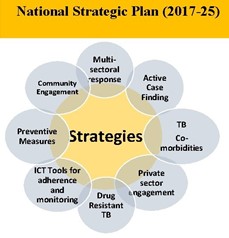
Source:
- World Tuberculosis Day: Mansukh Mandaviya reaffirms commitment to make India TB-free by 2025
- The National Tuberculosis Elimination Program (NTEP)
Image source:
Our farm reforms deserve another chance: LM
Essence: The farm sector is in dire stress and needs an overhaul as it has worsened Indian inequality. Supreme Court appointed panel findings point out that there was a significant farmer support to the scrapped farm laws. With the three controversial farm laws scrapped, there is a need for a consensus-led approach to get the popular backing. Farmers, including protestors, need to be given adequate representation in redrafting laws, public feedback should be sought, and draft bills need to be sent to a parliamentary committee so that other political parties can offer their inputs.
The primary suspicion about the farm laws was that if state procurement were to wither away, farmers would be exploited by corporate players. Thus, aggrieved farmers should have direct access to courts of justice and standard rules of free market should be applied, so that no private entity gets to dominate farming and cartelized purchases. These measures along with formation of farmer collectives would mitigate monopsony risk.
Why should you read this article?
- To understand the need to bring back farm reforms.
- To know about the steps needed in building consensus for new farm reforms.
- To understand how the fears surrounding the scrapped farm laws and the measures to overcome these fears.
Source:
Ukraine: the pawn in the power game: TH
Essence: The editorial highlights how countries, in the name of protecting democracy, time and again have fallen prey to USA’s national interests. USA has previously used CIA to topple democratic govt in Iran, and support dictatorship in Saudi to protect its oil supplies. It voted in favor of the apartheid government in South Africa in 1963. It has meddled with many Latin American states like Chile, which had democratically elected communist governments. It has armed Pakistan and saddled it to wage three wars against India.
Ukraine is the next victim, impacted by USA’s policy to perpetuate a unipolar world and sale of arms by defense lobby. Earlier arming Afghanistan neighbors and now European countries, the first example is Ukraine, which is being provided arms by USA and the second being Germany, whose 50% imports in the last 10 years have been from USA. A question should be asked if Russia was a threat to East European countries, which led to extension of NATO further eastward. USA must accept neutral engagement for itself to end the war, broker peace between parties and stop using war as a tool to grow its business.
Why should you read this article?
- To understand the history of USA’s intervention in regional and domestic matters of countries in the name of war but extending its national interests.
- To know the advantages of war on USA.
Source:
Budgeting for a well-fed, self-reliant India: IE
Essence: A country cannot become truly self-reliant without becoming self-reliant in food. We need not produce everything in our home to be self-reliant. However, we must specialize in commodities in which we have comparative advantage and export it.
Increasing investment in research and development in agriculture to at least 1 percent of its agri-GDP is a tested way to make agriculture globally competitive. Currently it is at 0.6%. Government should increase public expenditure on Agri R&D and at the same time also incentivise private companies to expand their R&D programmes.
Why should you read this article?
- To know the real meaning of self-reliance in food.
- To understand steps necessary to ensure self-reliance in food.
Source:
Udaan for Girls
Background
- Formal education is a still a dream for many girls in India as it is often considered to be extra burden on the family.
- Rajasthan is actively working towards internalising Project Udaan to better the future to girls in the State.
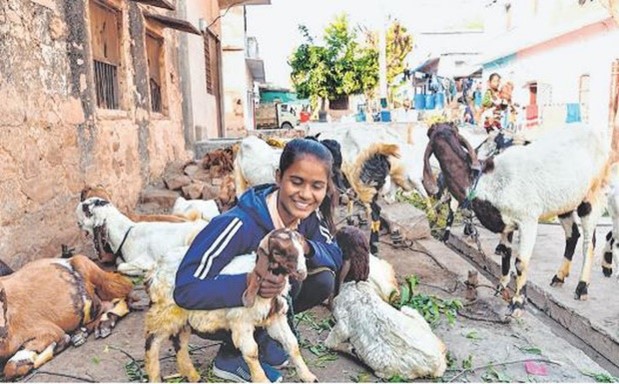
About the Scheme
- The project has been launched by the Rajasthan Government in collaboration with IPE Global.
- Project Udaan has been formalised to provide access to scholarship schemes to girls education along with continued schooling.
- This has helped in mobilising the rural communities of Rajasthan to support girls education and in facilitating attendance in school without breaks.
- The programme also provides adolescent sexual and reproductive health education to girls.
Quote: Women, like men, must be educated with a view to action, or their studies cannot be called education.– Harriet Martineau
Source:
Share the article
Get Latest Updates on Offers, Event dates, and free Mentorship sessions.

Get in touch with our Expert Academic Counsellors 👋
FAQs
UPSC Daily Current Affairs focuses on learning current events on a daily basis. An aspirant needs to study regular and updated information about current events, news, and relevant topics that are important for UPSC aspirants. It covers national and international affairs, government policies, socio-economic issues, science and technology advancements, and more.
UPSC Daily Current Affairs provides aspirants with a concise and comprehensive overview of the latest happenings and developments across various fields. It helps aspirants stay updated with current affairs and provides them with valuable insights and analysis, which are essential for answering questions in the UPSC examinations. It enhances their knowledge, analytical skills, and ability to connect current affairs with the UPSC syllabus.
UPSC Daily Current Affairs covers a wide range of topics, including politics, economics, science and technology, environment, social issues, governance, international relations, and more. It offers news summaries, in-depth analyses, editorials, opinion pieces, and relevant study materials. It also provides practice questions and quizzes to help aspirants test their understanding of current affairs.
Edukemy's UPSC Daily Current Affairs can be accessed through:
- UPSC Daily Current Affairs can be accessed through Current Affairs tab at the top of the Main Page of Edukemy.
- Edukemy Mobile app: The Daily Current Affairs can also be access through Edukemy Mobile App.
- Social media: Follow Edukemy’s official social media accounts or pages that provide UPSC Daily Current Affairs updates, including Facebook, Twitter, or Telegram channels.

